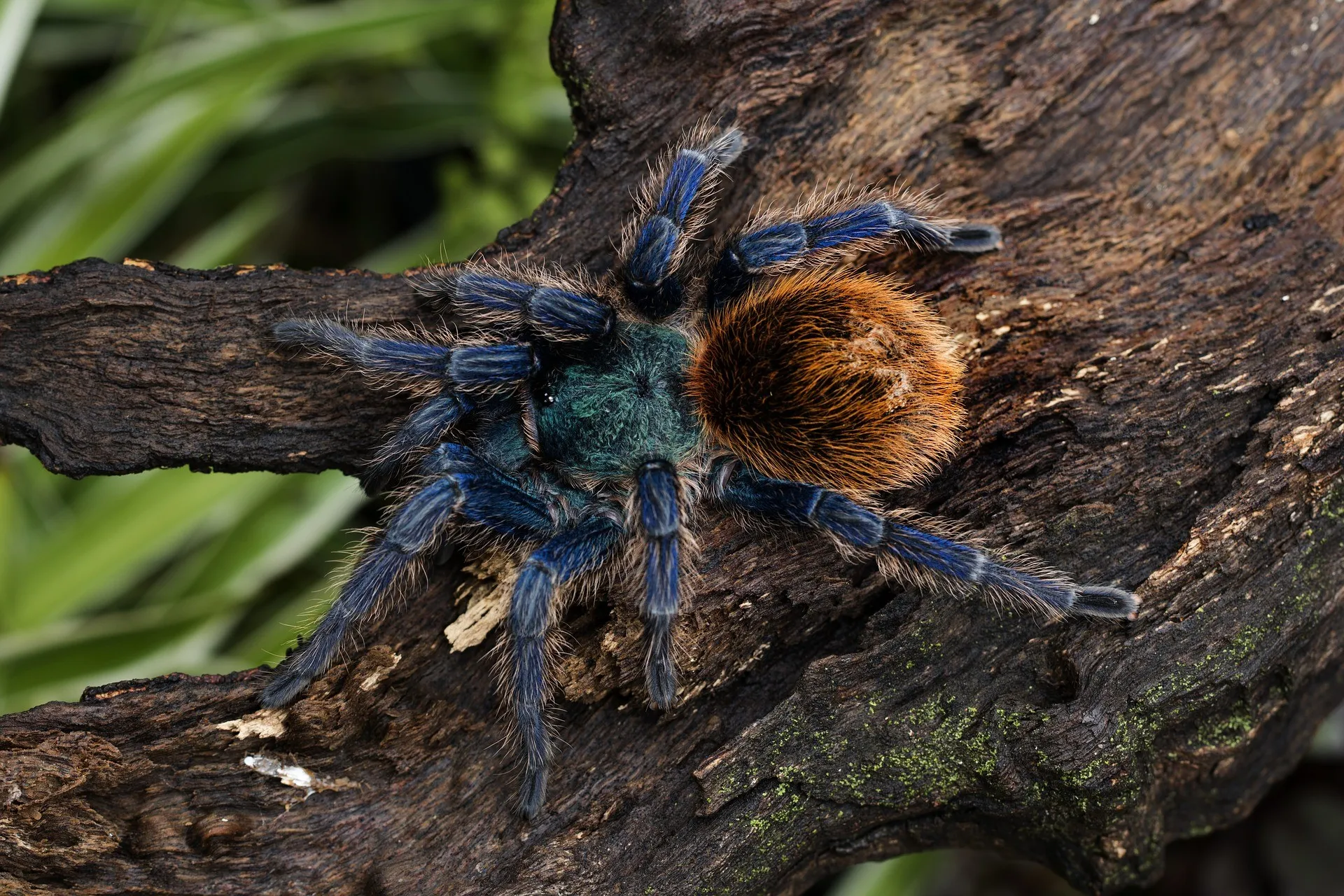Understanding Blue Tarantulas
The captivating beauty of the Blue Tarantula has made it a popular choice for arachnid enthusiasts. Native to specific regions, these spiders are known for their vibrant blue coloration, particularly noticeable in certain lighting conditions. Keeping a Blue Tarantula can be a rewarding experience, offering a unique glimpse into the world of these fascinating creatures. However, their care requires specific knowledge and attention to detail to ensure they thrive in a captive environment. This guide will provide comprehensive information on all aspects of Blue Tarantula care, from habitat setup and feeding to handling and health maintenance. Understanding their natural habitat, behavior, and needs is crucial for providing a suitable and enriching environment for your pet Blue Tarantula.
Appearance and Characteristics
Blue Tarantulas, often referring to species like Chromatopelma cyaneopubescens (Greenbottle Blue Tarantula) and various Psalmopoeus species, are renowned for their striking blue coloration. This coloration, varying in shade from electric blue to more muted tones, is not uniform across the entire body. The legs and carapace often display the most vivid blues, while the abdomen may have contrasting colors, such as orange or red hairs. The size of Blue Tarantulas varies depending on the species, but most are medium-sized tarantulas, with a leg span ranging from 5 to 7 inches. The presence of urticating hairs, used as a defense mechanism, is also a key characteristic. These hairs can cause skin irritation if they come into contact with human skin. Recognizing these characteristics is fundamental to their proper care and handling.
Temperament and Behavior
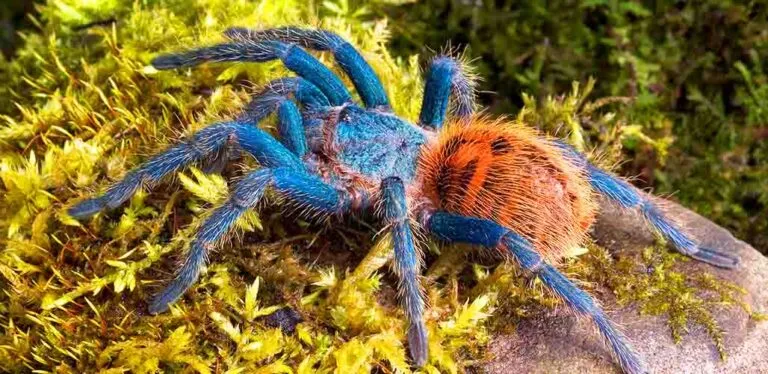
The temperament of a Blue Tarantula can vary. Some species are known to be more docile, while others may be more defensive. Generally, Blue Tarantulas are not aggressive but can be skittish and prone to flicking urticating hairs when threatened. Observing their behavior is key to understanding your tarantula’s personality and responding appropriately. They are primarily terrestrial spiders, spending most of their time on the ground or in burrows. They are nocturnal hunters, active mostly during the night. Understanding their natural behaviors, like burrowing, hiding, and hunting, allows you to create a habitat that meets their behavioral needs and provides a more enriching environment. Observing your tarantula’s feeding habits, molting cycles, and overall activity level provides insight into its health and well-being.
Choosing Your Blue Tarantula
Where to Buy
When acquiring a Blue Tarantula, sourcing from reputable breeders or specialized pet stores is crucial. These sources typically provide healthier specimens and offer valuable information on the tarantula’s origin, age, and care requirements. Avoid purchasing tarantulas from unreliable sources where the health and lineage may be questionable. Researching breeders or stores beforehand is vital to ensure they have a good reputation for animal welfare and knowledge of tarantula care. Local exotic pet shops often carry a selection of tarantulas, and their staff can offer guidance on specific species and care needs. Online marketplaces and forums can also be sources, but exercise caution and always verify the seller’s credibility and reviews before making a purchase.
Selecting a Healthy Tarantula
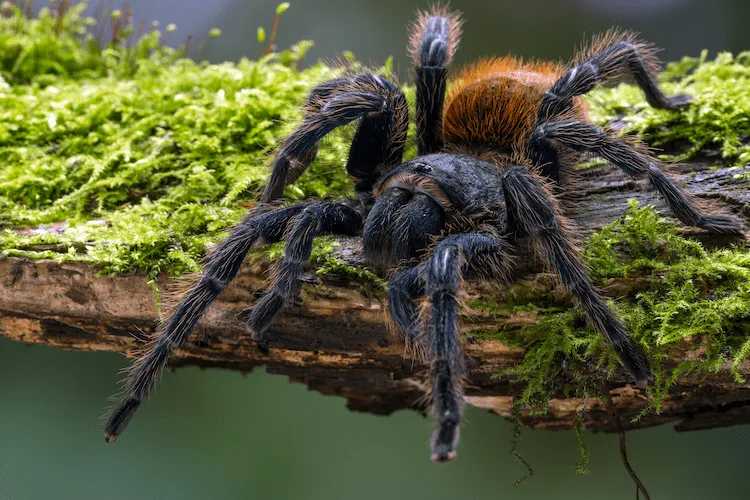
Choosing a healthy Blue Tarantula is essential for its long-term well-being. Look for a tarantula that is alert, active, and has a good appetite. Check for any signs of illness or injury, such as missing limbs, lethargy, or unusual body postures. The tarantula should have a plump abdomen, indicating it is well-fed and hydrated. Avoid tarantulas with a shrunken abdomen or a dull appearance, as these could be signs of dehydration or illness. The legs should be intact and move freely. Inspect the enclosure for any mites or other parasites, as they can be detrimental to the tarantula’s health. Purchasing a juvenile tarantula, rather than an adult, allows you to witness the growth and molting process, providing a more engaging experience.
Setting Up the Perfect Habitat
Enclosure Size and Type
The enclosure size is crucial for the Blue Tarantula’s well-being. A general guideline is to provide an enclosure that is at least three times the tarantula’s leg span in length and width, and twice the leg span in height. This allows ample space for movement and exploration. Glass or clear plastic enclosures are ideal, as they allow for easy observation of the tarantula. The enclosure should have a secure lid to prevent escapes, with adequate ventilation to ensure proper airflow and prevent mold growth. Ensure the enclosure is escape-proof, as tarantulas are surprisingly agile. Consider the tarantula’s size and growth potential when choosing the enclosure, ensuring it has enough space for the tarantula to molt and move around comfortably. Avoid overly large enclosures for smaller tarantulas, as they may feel insecure and be less inclined to feed.
Substrate and Decor
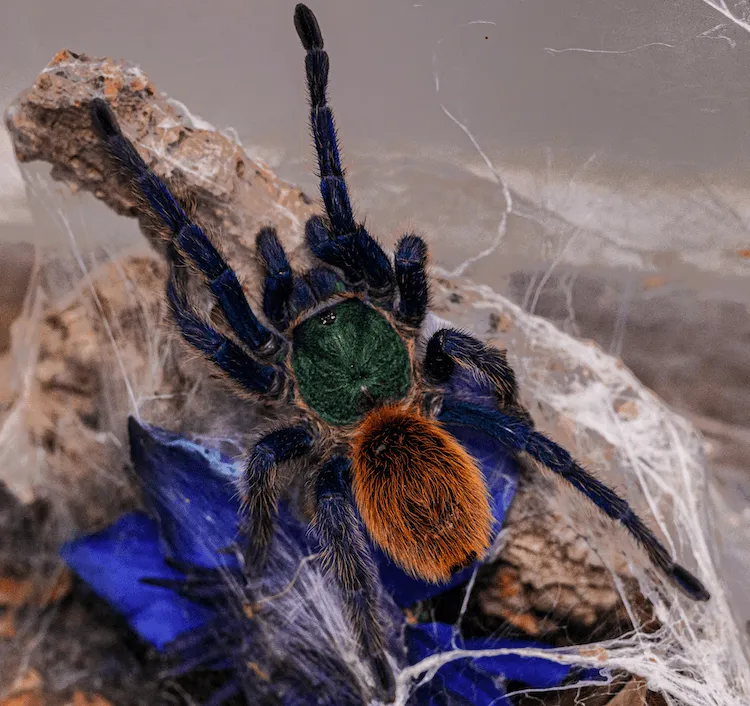
The substrate plays a vital role in the Blue Tarantula’s habitat, providing a comfortable environment and helping to regulate humidity. A mixture of peat moss, coconut fiber, and vermiculite is often recommended. The substrate should be deep enough to allow the tarantula to burrow if it chooses. Ensure the substrate is kept clean and replaced periodically to prevent the buildup of waste and the growth of harmful bacteria. Decorate the enclosure with elements that mimic the tarantula’s natural environment. This can include cork bark, artificial plants, and hides. These additions provide the tarantula with opportunities to hide, explore, and feel secure. Avoid sharp objects or materials that could potentially harm the tarantula. Proper decoration can enhance the aesthetic appeal of the enclosure and provide environmental enrichment for the spider. Providing a shallow water dish is also essential for hydration.
Temperature and Humidity
Maintaining the correct temperature and humidity levels is essential for the Blue Tarantula’s health. The ideal temperature range is typically between 75-85°F (24-29°C). Use a heat source, such as a heat mat or ceramic heat emitter, to maintain this temperature if necessary. Place the heat source on one side of the enclosure to create a thermal gradient, allowing the tarantula to regulate its body temperature. Humidity levels should be maintained between 60-70%. This can be achieved by misting the enclosure with water regularly and ensuring the substrate remains slightly damp. A hygrometer is a useful tool to monitor the humidity levels. Proper ventilation is also critical to prevent the buildup of excessive moisture and the growth of mold. Regularly monitor the temperature and humidity levels to ensure they remain within the recommended range.
Feeding Your Blue Tarantula
What to Feed
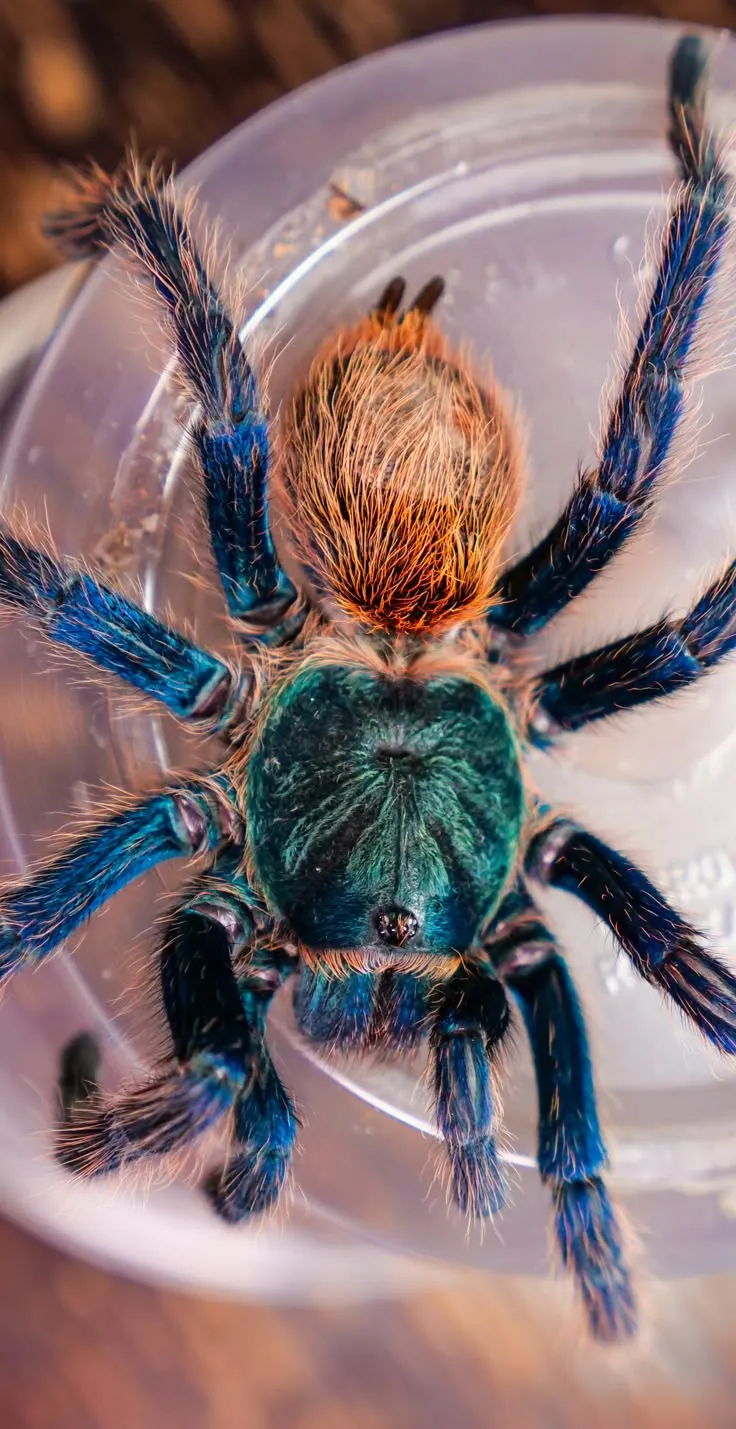
Blue Tarantulas are carnivores and primarily feed on insects. Crickets, mealworms, roaches, and other commercially available feeder insects are suitable options. Ensure the insects are gut-loaded with nutritious food before feeding them to your tarantula. This enhances the nutritional value of the meal. Avoid feeding wild-caught insects, as they may carry parasites or pesticides that could harm your tarantula. The size of the feeder insect should be appropriate for the tarantula’s size; generally, the insect should be no larger than the tarantula’s abdomen. Variety in the diet is also beneficial, providing a range of nutrients. Remove any uneaten insects from the enclosure within 24 hours to prevent them from stressing or harming the tarantula.
Feeding Frequency
The feeding frequency depends on the tarantula’s age and size. Spiderlings typically require more frequent feedings, usually every 2-3 days. As the tarantula matures, the feeding frequency can be reduced to once or twice a week. Observe your tarantula’s feeding behavior to gauge its appetite. If it refuses food, it may be in pre-molt, or the feeding frequency should be adjusted. Always provide fresh water in a shallow dish. Adjust the feeding schedule based on the tarantula’s growth and overall health. Overfeeding can lead to obesity and other health problems, so it’s essential to find a balance.
Watering and Hydration
Providing fresh water is essential for the Blue Tarantula’s hydration. Use a shallow water dish, such as a bottle cap or a commercial water dish designed for reptiles. Ensure the water dish is easily accessible but not so deep that the tarantula could drown. Clean and refill the water dish regularly to prevent the buildup of bacteria and ensure the water remains fresh. In addition to the water dish, misting the enclosure with water can help maintain humidity levels and provide an additional source of hydration. The frequency of misting depends on the humidity level and the enclosure’s ventilation. During molting, it’s especially important to maintain adequate hydration to help the tarantula shed its exoskeleton successfully.
Handling and Safety
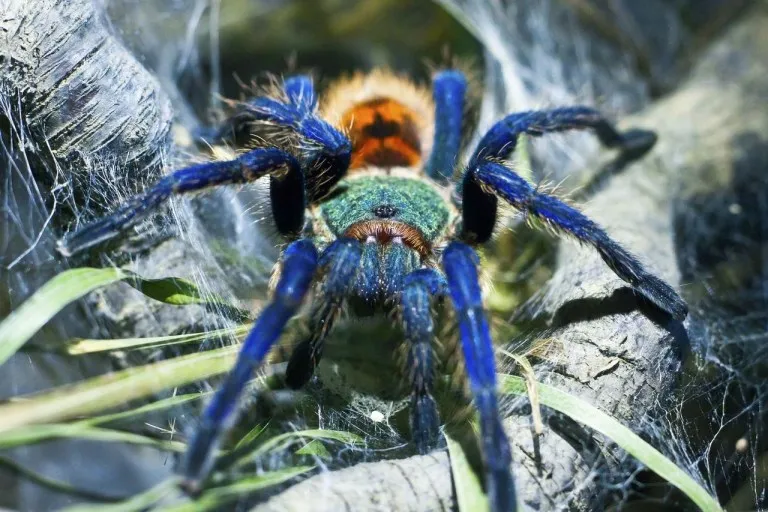
Safe Handling Practices
Handling Blue Tarantulas should be approached with caution. While some species are more docile, all tarantulas can bite, and their bites can be painful. Handling should be limited and only done when necessary, such as during enclosure maintenance. Always wash your hands before and after handling the tarantula. Approach the tarantula calmly and slowly. Avoid making sudden movements or startling the spider. Use a gentle approach and avoid any actions that could be perceived as a threat. If handling is required, allow the tarantula to walk onto your hand rather than picking it up. Handle the tarantula close to a soft surface, such as a table or the enclosure floor, to minimize the risk of injury if it falls.
Recognizing Stress and Avoiding Bites
Recognizing signs of stress in a Blue Tarantula is vital to avoiding bites. These signs include the tarantula rearing up on its hind legs, displaying fangs, or flicking urticating hairs. If the tarantula displays these behaviors, it is best to leave it alone and avoid handling. Avoid placing your fingers near the tarantula’s fangs. If a bite occurs, remain calm and clean the wound thoroughly with soap and water. While tarantula bites are rarely life-threatening, they can cause pain, swelling, and redness. Watch for any signs of allergic reaction and seek medical attention if necessary. Understanding the tarantula’s body language and respecting its space are the best ways to avoid bites and ensure a safe handling experience.
Health and Common Issues
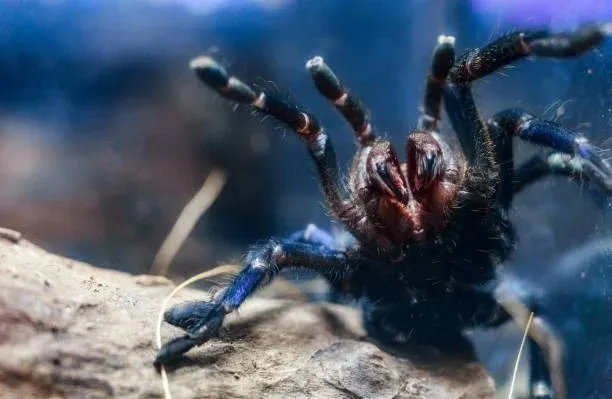
Molting
Molting is a natural process where tarantulas shed their exoskeletons to grow. During pre-molt, the tarantula may stop eating, become lethargic, and its abdomen may appear darker. It is important not to disturb the tarantula during molting. Provide ample humidity and avoid handling it. The molting process can take several hours or even days. After molting, the tarantula will be vulnerable and should be left undisturbed for several days until its new exoskeleton hardens. Avoid feeding the tarantula until its fangs have hardened, typically about a week after the molt is complete. Observe the tarantula carefully during molting to ensure it is successful.
Parasites and Diseases
Blue Tarantulas are susceptible to certain parasites and diseases. Mites are a common problem and can infest the tarantula and its enclosure. If you notice mites, isolate the tarantula and clean the enclosure thoroughly. Use appropriate treatments recommended by a veterinarian or experienced tarantula keeper. Fungal infections can occur due to excessive humidity or poor ventilation. Signs of fungal infections include discoloration of the exoskeleton or changes in behavior. Bacterial infections can also occur. Maintain good hygiene and provide appropriate environmental conditions to prevent health issues. If you suspect your tarantula is sick, consult a veterinarian with experience in exotic animals. Early diagnosis and treatment are crucial for the tarantula’s recovery.
Breeding Blue Tarantulas
Sexing Your Tarantula
Sexing a Blue Tarantula requires close examination of its underside. This is most easily done during molting, when the exoskeleton is shed. Look for the presence of spermathecae (sperm storage organs) in females, which appear as small pouches. Males have modified pedipalps (the small appendages near the mouth) that are used for mating. Alternatively, you may examine the tarantula’s abdomen after a molt. The presence of the spermathecae is visible in females. Sexing is important if you intend to breed your tarantulas. Consulting with experienced breeders can also help you correctly sex your tarantulas.
Mating and Egg Sacs
Breeding Blue Tarantulas can be a rewarding experience, but it requires careful planning and preparation. Successful breeding involves introducing a mature male to a mature female. The female is often larger and more aggressive. Supervise the mating process closely to prevent the female from harming the male. After mating, the female will typically produce an egg sac, which she will guard carefully. The incubation period varies depending on the species and environmental conditions. Once the spiderlings hatch, they will require their own separate enclosures and specialized care. Breeding Blue Tarantulas is an advanced undertaking, so it is essential to thoroughly research the specific needs of the species you are breeding.
Conclusion
Keeping a Blue Tarantula can be a fulfilling experience for anyone passionate about these beautiful creatures. By understanding their needs, providing the right environment, and practicing responsible care, you can ensure your Blue Tarantula lives a long, healthy, and happy life. Remember to always prioritize the tarantula’s well-being, respect its natural behaviors, and continuously learn about its specific needs. Enjoy the fascinating world of Blue Tarantulas!
